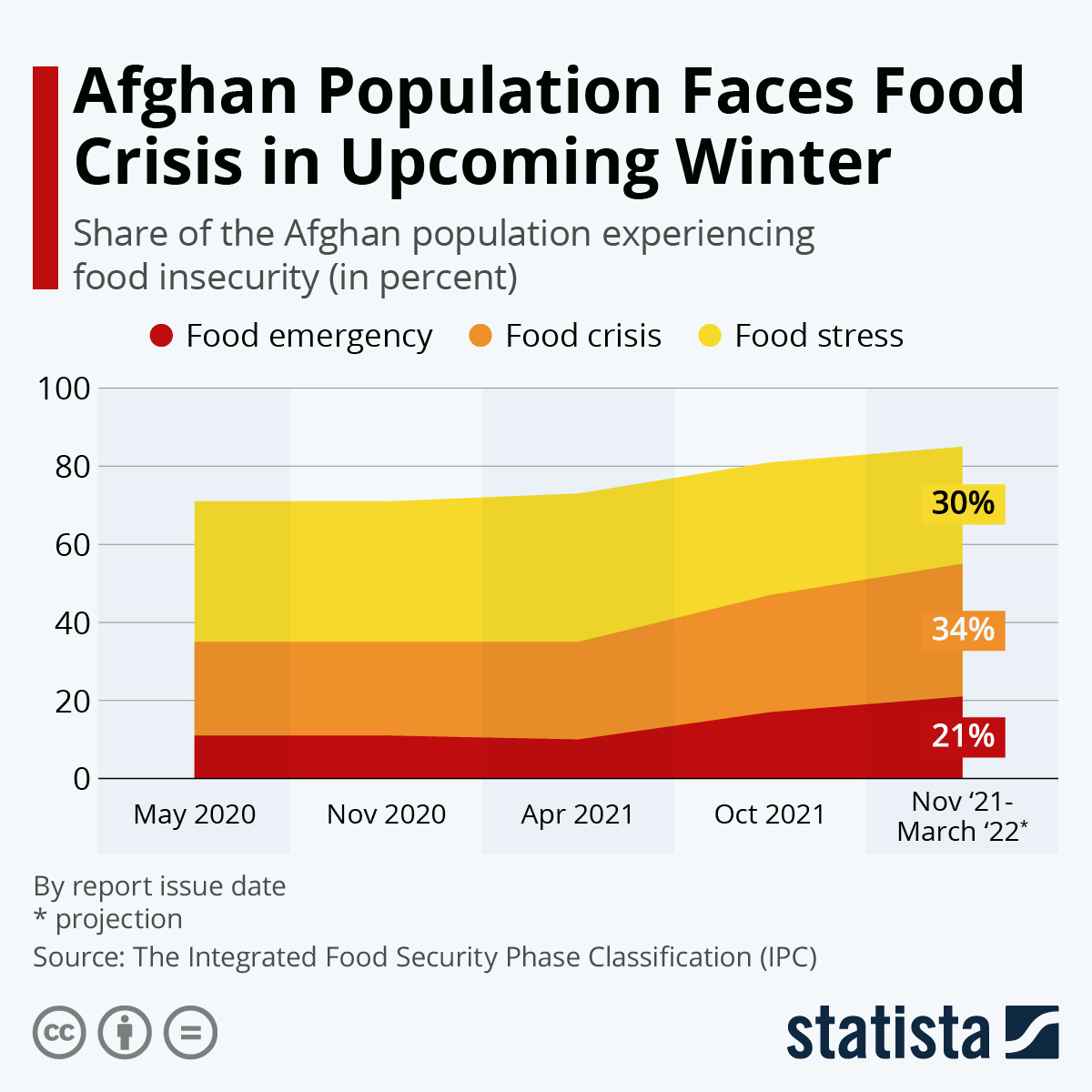Food crisis forecasting for Afghanistan, called terrifying by the FAO, is projecting more than half of the country’s population will experience acute food shortages this winter unless actions are taken. According to reports by The Integrated Food Security Phase Classification, 85 percent in the country are to experience any type of food insecurity, including food stress classified as non-acute, between November 2021 and March 2022.
According to the reports, drought conditions paired with the collapse of public services and the economy as a result of the Taliban takeover brought about the dismal conditions, which could increase food prices beyond the reach of many. Sanctions, conflict flare-ups and decreased international aid are also expected to decrease the physical access to food. Internal displacement as a result of the crisis is also a driver of food insecurity, putting pressure on larger cities where many of the displaced seek refuge.
The 55 percent of Afghans expected to experience acute food shortage this winter is the highest ever recorded in the country, according to the IPC. Being in food crisis means that household cannot cover all meals anymore by their usual means but could seek out avenues like selling belongings or seeking extra work. Being in a food emergency, however, means that those avenues have been exhausted. A last classification – food catastrophe or the extreme deprivation of food causing malnutrition and death – is not predicted for Afghanistan. This level of food shortage is currently being detected by the IPC in Ethiopia’s Tigray region and to a lesser extend in South Sudan, Yemen and Madagascar.





















